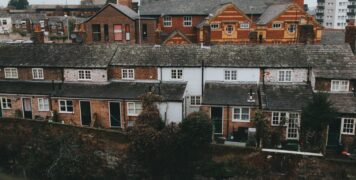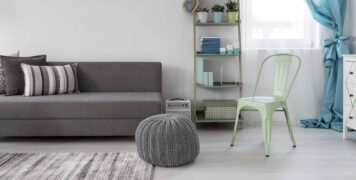Contact
020 7953 7040
info@ccameron.co.uk
Charles Cameron & Associates
Blackfriars Foundry
154-156 Blackfriars Road
London SE1 8EN
How to choose a buy-to-let property
October 22, 2021
Information published was correct at the time of writing
--

Searching for a buy-to-let property to invest in is very unlike looking for a home of your own. Your budget, criteria, and decision-making process will all be different. Here are some of the differences and considerations at each stage.
WHAT IS YOUR BUDGET?
Before looking at properties, you need to establish the price range for your search. This will largely depend on how much you have saved as a deposit and how much a mortgage provider will agree to lend you. Buy-to-let mortgages typically require larger deposits than standard residential mortgages. So, you should plan to have a deposit of around 25% or more of the property value. The mortgage provider will decide how much to lend you based on factors including the expected rental income from the property. The monthly rent you charge for the property will typically need to be in the region of between 25% to 45% higher than the monthly mortgage repayments.
WHAT TYPE OF TENANT?
Something else to do before you start your search is to decide what type of tenant you want to appeal to, since different tenants are looking for different properties. It’s important to have a clear idea of the type of tenant you are hoping to attract as this will be key in finding the right buy-to-let property. For example, if you want to attract professionals then you should probably steer clear of a noisy student area. If your target tenants are families then local parks and amenities will be a good selling point. If you want students then you obviously need a property in an affordable location, close to the campus, or even a flat within a purpose-built block. If you’d ideally like to attract circus clowns, you may want to buy a place near a glitter shop, with parking for cars whose wheels fall off when you close the doors. Consider the rental market in the location in which you’ll be buying. Is it a university town with lots of students? A city centre full of young professionals? Or a suburb filled with commuters and families? Once you have decided on your tenants’ persona, you can then start your property search with this in mind.
HAVE YOU ESTABLISHED YOUR CRITERIA?
This will help you to create a list of features your property needs to have. Ask yourself:
• Should it be a house or a flat?
• Does it need to have a garden?
• Will your tenant want space for parking?
• What nearby facilities will they be looking for?
• Would a newly built or period property be more attractive?
• How big does it need to be?
• How many bedrooms and bathrooms will your tenants need?
• How much can your target tenants afford to spend?
You’ll likely come up with a list of must-have features and some others that are preferable but not essential. It’s good to approach prospective properties with some flexibility.
WHAT TYPE OF PROPERTY?
Taking the time to find the right house or flat is an essential part of investing in a buy-to-let property. The best and most expensive homes do not always make the best buy-to-lets. The ideal investment properties for landlords are flats and houses that are cheap to buy and mortgage, but which command comparatively good rents. Local estate agents can give you valuable information about the local market and demographics. House prices indexes can help you to identify properties with long-term investment potential. Online and social media research can also help you to understand local communities. The more attention you pay to this part, the better.
HAVE YOU DONE THE MATHS?
After you’ve chosen a property that you think would be suitable, you need to do the maths to be sure it’s a sensible investment. Whatever your experience level, rental yields are the number one thing that as an investor you need to focus on. A rental yield is the percentage of return on investment that you receive through rental income. A property rental yield tells you how much money you will make from your investment. Without knowing what a rental yield is or how to identify a good rental yield, you will limit your potential returns. Calculate the rental yield, the amount you’ll make back on your initial investment. This is the total income you expect to receive in rent annually as a percentage of the property price. For example, a property that costs £250,000 and delivers a rental income of £12,500 a year has a rental yield of 5%. You’re aiming for a rental yield of at least 5%, but ideally more. If you’ve done the maths and the rental yield looks promising, you might be ready to make an offer.



